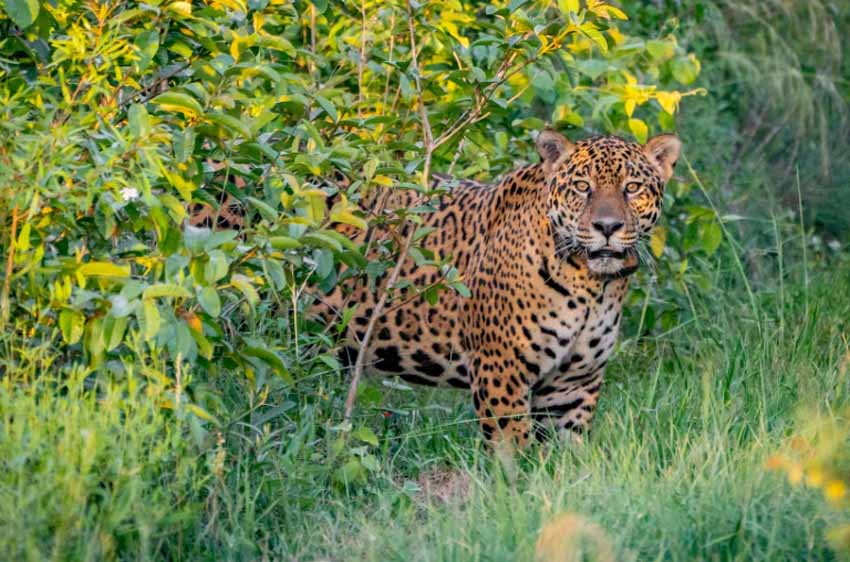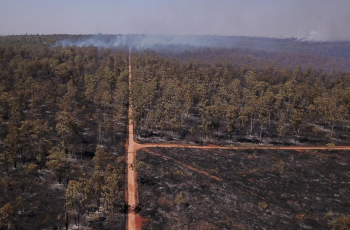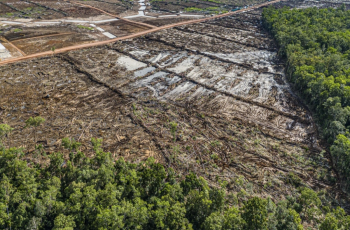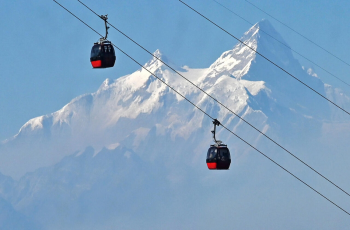Jaguar Released In Argentina To Help Endangered Species
It is estimated there were more than 100,000 jaguars when Europeans arrived in the 15th century, their habitat ranging from semi-desert areas of North America to the tropical forests of South America.

Handout picture released by Rewilding Argentina Foundation showing a five-year-old jaguar named Jatobazinhoafter he was released back into the wild at Ibera National Park, in Corrientes, on December 31, 2021 Matias REBAK Rewilding Argentina/AFP
Buenos Aires (AFP) : A jaguar named Jatobazinho was released into a national park in Argentina Friday as part of a program to boost the numbers of this endangered species.
This was the eighth jaguar freed this year into Ibera National Park but the first adult male, said the environmental group Rewilding Argentina, which is behind the project.
Jatobazinho weighs about 90 kilos (200 pounds) and has brown fur peppered with black spots.
He first appeared at a rural school in 2018 in Brazil, looking skinny and weak after crossing a river from Paraguay.
The big cat spent a year in an animal refuge in Brazil until he was sent to a jaguar reintroduction center operating since 2012 in Argentina's northeast Corrientes province, where the species had been extinct for 70 years.
Sebastian Di Martino, a biologist with Rewilding Argentina, said that as the jaguar needed to be nice and relaxed as it left its enclosure and entered the wild.
"If the animal is stressed it can become disoriented and end up anywhere," he said.
He said these jaguars were fed live prey while in captivity because they have to know how to hunt.
In the Ibera park, there is plenty of wildlife for them to feed on such as deer.
The jaguars are tracked with a GPS device they wear.
There are plans now to release a female that was born at the reintroduction center.
The park is also awaiting the arrival of three wild jaguars from Paraguay, and two more raised in captivity in Uruguay and Brazil.
Jaguars are native to the Americas.
It is estimated there were more than 100,000 jaguars when Europeans arrived in the 15th century, their habitat ranging from semi-desert areas of North America to the tropical forests of South America.
Conservation groups say the jaguar population of South America has fallen by up to 25 percent over the past 20 years as deforestation eats up their habitat.
-

‘I’m scared for my entire generation’: Young Americans reflect on Trump's first 100 days
2025-04-26 -

Foreign students give up American dream over Trump crackdown
2025-04-25 -

Don't make 'disappointing' retreat on climate, COP30 CEO urges EU
2025-04-25 -

Kashmir: India-Pakistan tensions rise after attacks on tourists
2025-04-25 -

Countries could use forests to 'mask' needed emission cuts: report
2025-04-24 -

Kashmiri students say they have been threatened in India after attack
2025-04-24 -

Indonesia food plan risks 'world's largest' deforestation
2025-04-22 -

Trump tariffs torch chances of meeting with China's Xi
2025-04-22 -

In war-torn Sudan, a school offers a second chance at education
2025-03-02 -

Nepal community fights to save sacred forests from cable cars
2025-02-21
